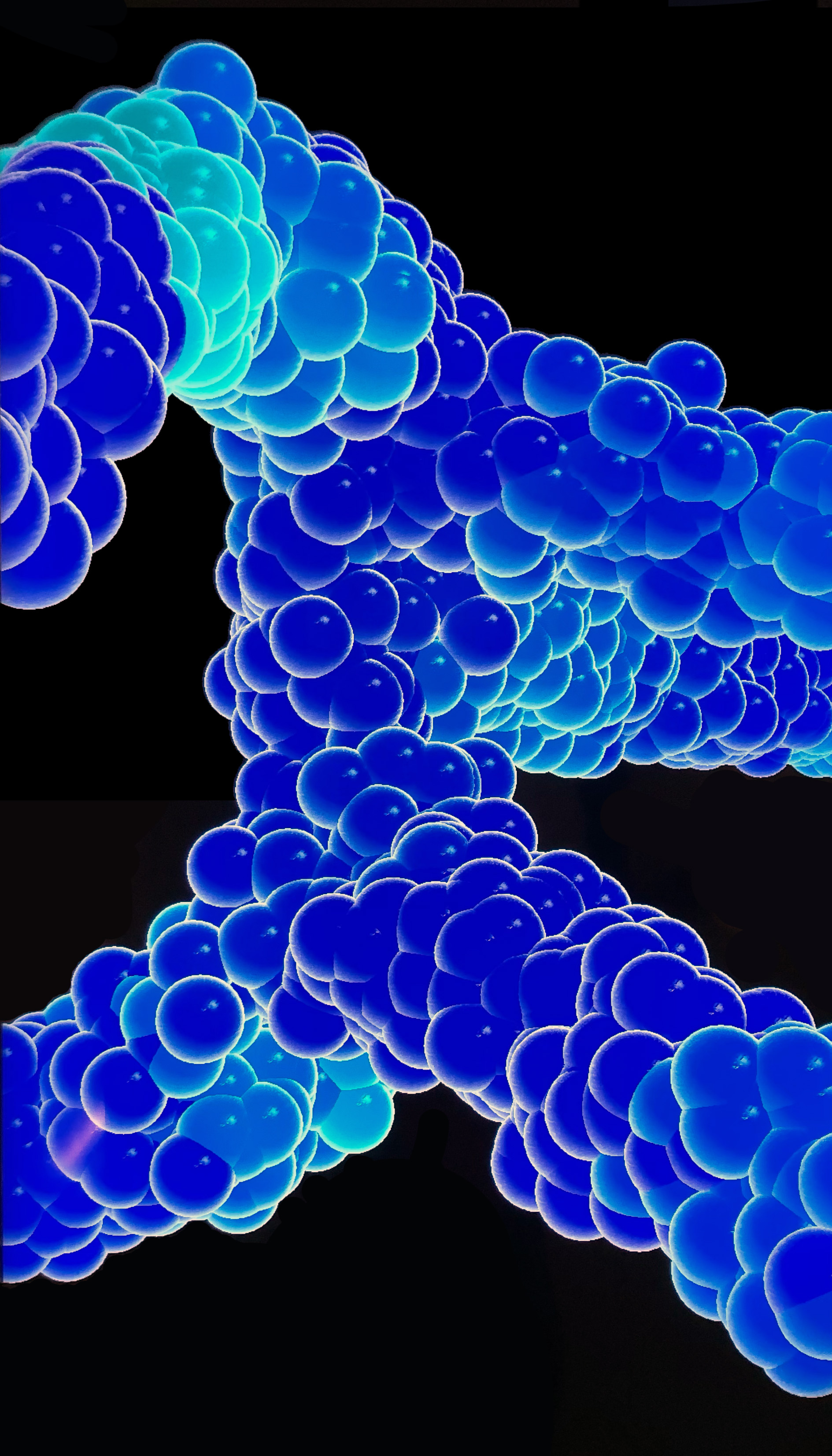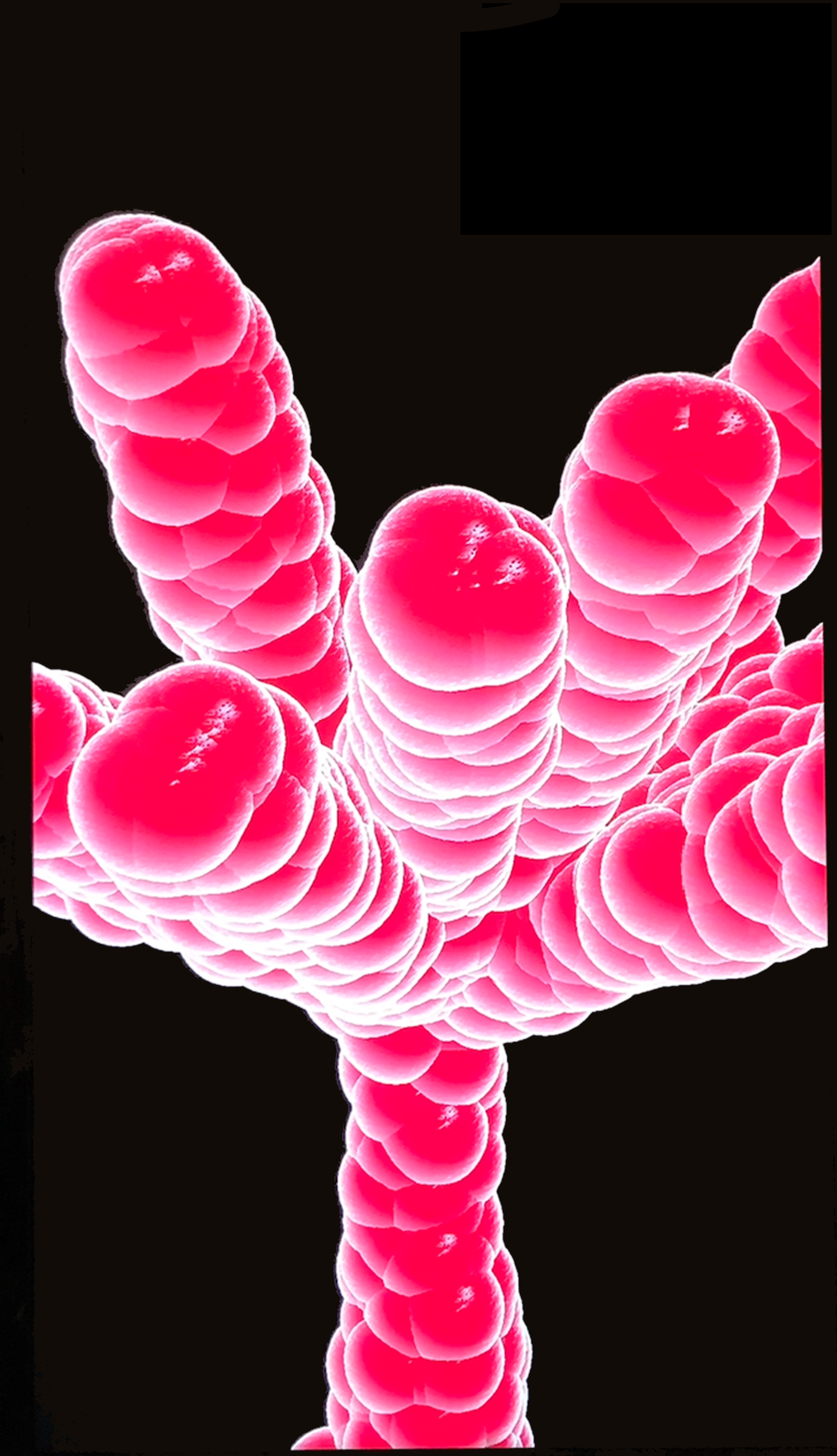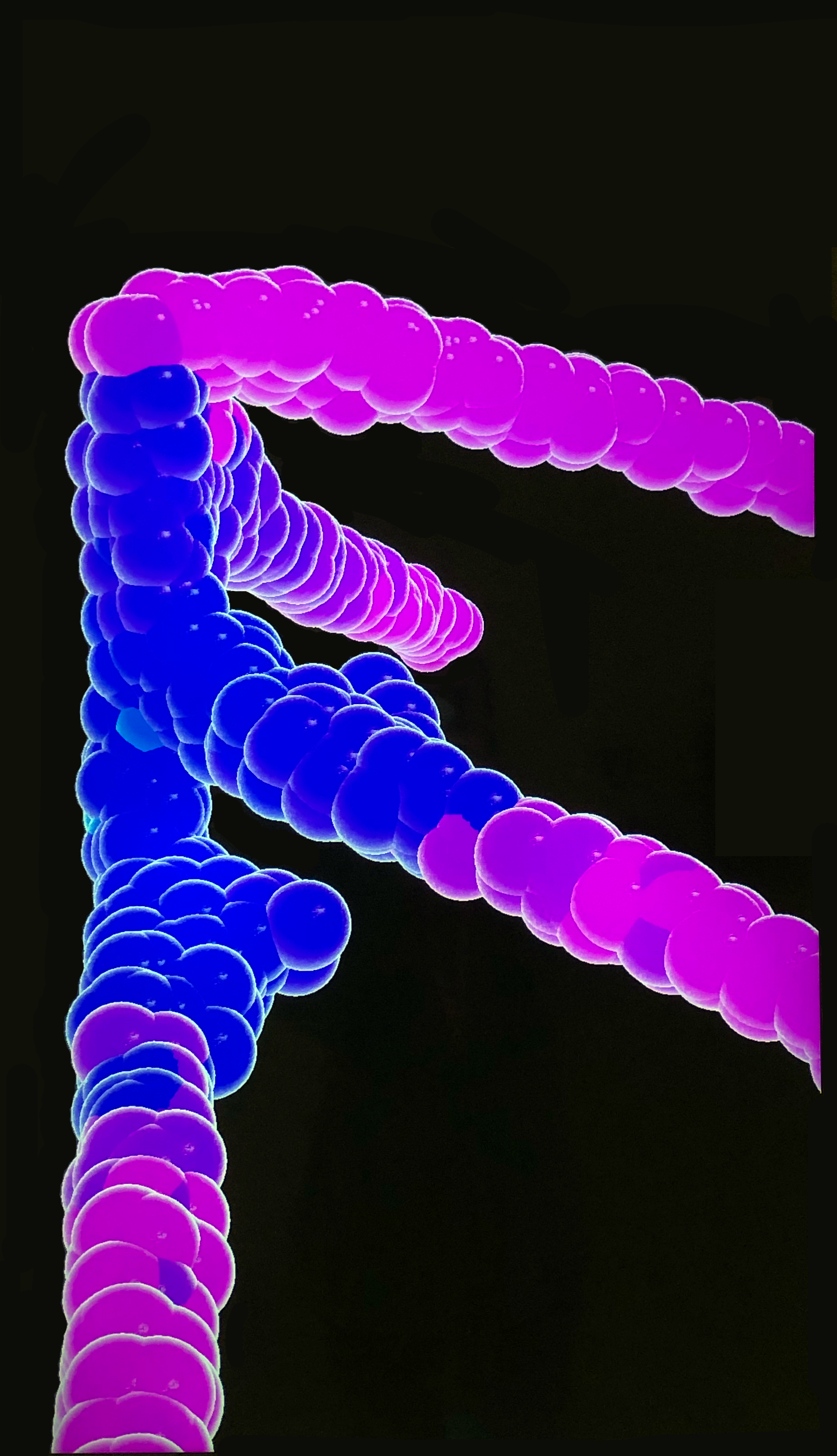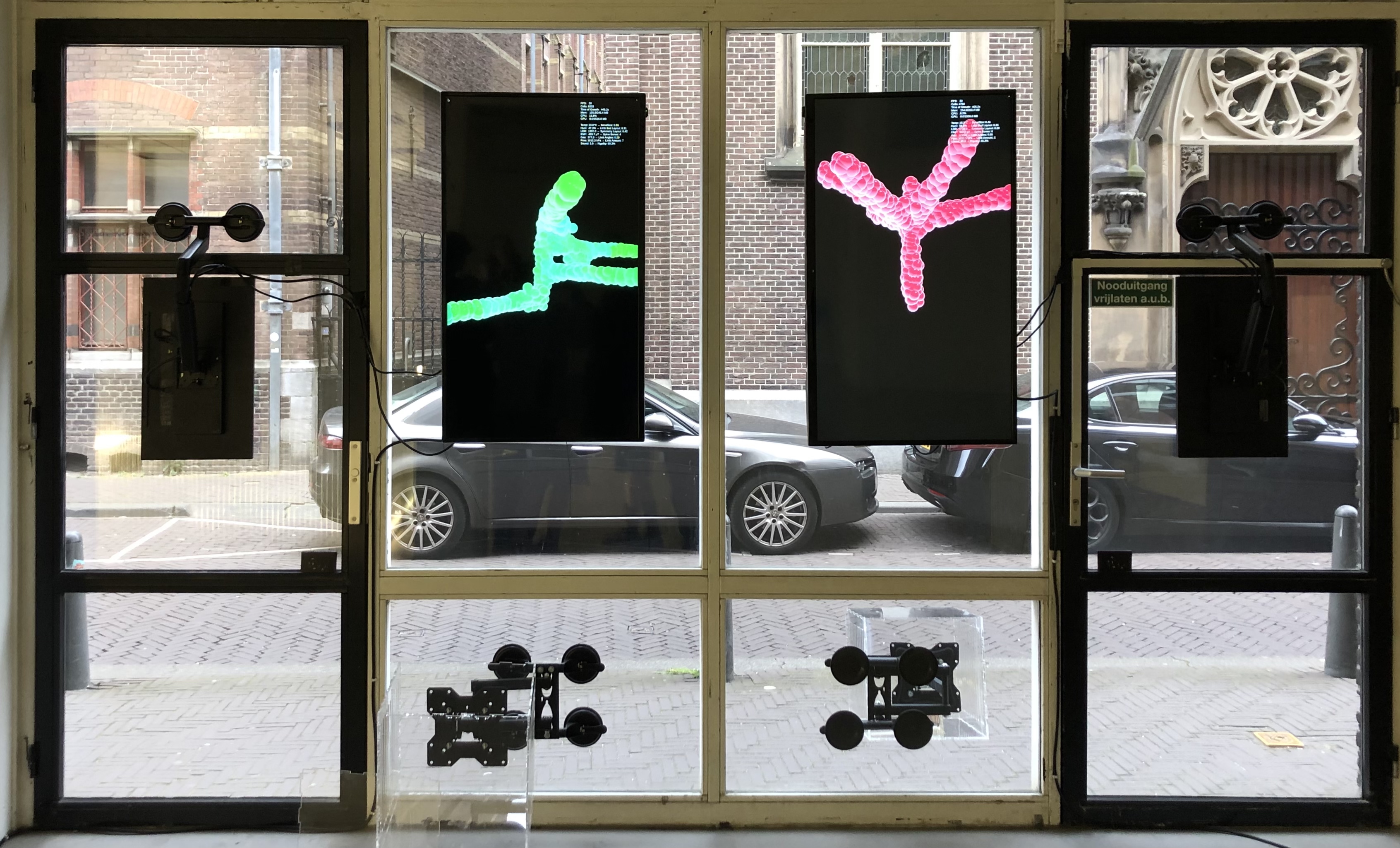epimorph
Growing a new body

Artistic idea
This project investigates the emergent process of the development of multicellular bodies through the communication of cells with their environment. In biological systems, the internal and external environments play an important role in morphogenetic growth decisions, by for example inhibiting or activating regulatory genes and providing mechanical and chemical guidance cues. During embryogenesis, the direct (inner) environment of the embryo directly shapes tissue growth through cell adhesion or tension or chemical gradients. Likewise, external (outer) environmental factors like pollution, nutition or UV-light can as well influence genes regulation.
In this simulation, environmental data is continuously received from a sensor box that transmits readings over a local network. These inputs directly influence the morphogenetic growth decisions of the skeletal rig structure, cell characteristics and division behavior. Additionally, computational resources (GPU, CPU, RAM) of the host machine are forming a part of the physical environment for the growth.
By using the shared environment of the audience as the environment for the growth, the simulation emphasizes how morphogenesis emerges from context-dependent processes. The audience is invited to experience this work as part of the environment, acting alongside wind, carbon dioxide and other non-human agents that are indistinguishably equal in shaping the organism’s body.



Context
The simulation is a three-dimensional, real-time system that computationally models the process of morphogenesis with animated cells growing along a skeletal rig structure. The approach is conceptually similar to Spore, where metaballs are used to generate smooth tissue around a rig structure and gene regulatory network (GRN) simulations, which start from a single virtual cell that replicates iteratively to form an expanding tissue-like structure.
The work sits in the lineage of ALife artworks, combining several aspects of these. Like cellular automata and Andy Lomas’ Cellular Forms, it explores how complexity and morphology can emerge from simple generative rules of cell division and growth. Similar to Yoichiro Kawaguchi’s GROWTH, Todd & Latham’s Mutator and Spore, it investigates how modularity can produce body diversity.
Karl Sim’s Evolving Creatures modeled how morphology and function co-evolve under selection pressures in a simulated environment, while Chiba et al.’s ecosystem simulation links morphology to ecological inheritance, exploring how organisms and their niches shape one another over time.
However, in contrast to these earlier ALife artworks, which focus on internal logics or evolutionary dynamics, this piece addresses the immediate exchange between environment and bodies during development. By integrating real-life physical environmental data, this work emphasizes the embeddedness of bodies in their context, reflecting ideas of eco-evo-devo and Lynn Margulis’ concept of sympoiesis. It acknowledges that no organism truly self-organizes, but is always in connection with other entities, and therefore relationally co-created.

Graduation Show Installation
In the installation of the Graduation Show 2025, two creatures grow simultaneously from identical code and connected to the same set of sensors, but in slightly different environments. While biological morphogenesis involves regulatory gene networks, chemical and mechanical signals, and environmental factors, this work focuses on the role of the environment during a body’s evolution.
It invites to reflect where environment starts:stops and interconnectedness between living beings, planetary environments and technologies begins and to re-think of our own agency that we hold within the systems that we are interwoven with.